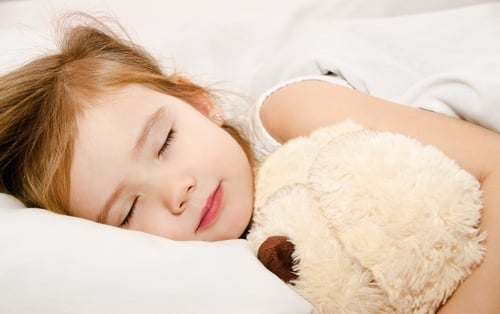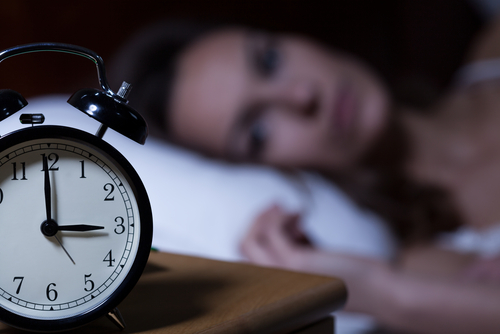Mind, Body and Sport: Sleep Disorders
An excerpt from the Sport Science Institute’s guide to understanding and supporting student-athlete mental wellness
By Michael Grandner
There’s a reason most people spend about one-third of their lives asleep. Sleep is not a passive state of rest, but an active state of rebuilding, repair, reorganization and regeneration.
During waking hours, we engage with the environment, taking in information, interacting with others and forming new memories and experiences. During sleep, the body performs many other vital functions for which it needs to be disconnected from the environment. For example, sleep plays an important role in memory consolidation, emotional regulation, growth and cell repair.
Despite the importance of sleep, difficulties are common. Most adults need seven to eight hours of sleep to maintain optimum functioning, and younger adults need more (eight to 10 hours). However, many people – including student-athletes – do not get the amount of sleep they need, often due to insomnia, sleep apnea or another sleep disorder.
Lack or loss of sleep can also be due to the many competing demands for time, which is a prominent concern in the student-athlete population. Either way, understanding and dealing with sleep problems may have a profound effect on mental clarity and health.
Inside the sleep process
Sleep is made up of two distinct states – REM (rapid eye movement) sleep, and non-REM (NREM) sleep. Most of the night is spent in NREM sleep, which is made up of:
- Stage 1 (very light, transitional sleep)
- Stage 2 (moderate sleep)
- Stage 3 (deep sleep)
- Stage 4 (very deep sleep)
REM sleep makes up about 20 percent of the night and is associated with (as the name implies) rapid eye movements. It is also characterized by a high degree of brain activity (similar to light sleep or waking). Dreams are common in REM sleep, and people would act out their dreams if it were not for signals from the midbrain that actively prevent skeletal muscle activity. Therefore, REM sleep is accompanied by lack of muscle tone (similar to paralysis).
Stages 3 and 4 of NREM sleep are crucial for growth, and cell rebuilding and repair. Stage 2, which accounts for more than 50 percent of the night, is important for many cognitive and bodily functions. For example, sleep is critically important for regulating many hormones that control stress, hunger and appetite, growth and healing, and biological rhythms. As such, sleep disruption is likely to disrupt any combination of these systems.
Almost 40 percent of American adults (about 80 million people) get six hours of sleep or less. The average American adult reports about two nights of insufficient sleep per week.
Insomnia, defined as a persistent difficulty falling or staying asleep, accompanied by daytime impairment, is common. Approximately one in three U.S. adults suffer from symptoms of insomnia, and about one in three of those meet criteria for an insomnia disorder (which is associated with increased risk of depression, substance use and medical problems).
Sleep apnea is also common. It is a condition in which an individual has difficulty breathing during sleep, usually because of a blocked airway, in which case it is referred to as “obstructive sleep apnea.”
It is estimated that among adults age 30 and older, rates for sleep apnea are 10-15 percent and 3-9 percent among men and women, respectively. This is significant, since sleep apnea is associated with obesity, cardiovascular disease, diabetes and neurological problems. Diagnosing and treating sleep apnea is a critical issue, since most people with the disorder do not know they have it, and untreated sleep apnea is a major health risk factor.
Since body type (such as obesity and thick neck) can play a role in developing sleep apnea, certain student-athletes may be at high risk for the disorder, especially football linemen.
How student-athletes are affected
There hasn’t been much research on student-athlete sleep patterns and problems, but given the timing of practices, travel and competition, student-athletes are likely at high risk of sleep difficulties. In addition, extra time demands, including balancing athletics with academics, can reduce sleep opportunity.
An American College Health Association survey found that on average, most student-athletes report four nights of insufficient sleep per week. However, insomnia diagnosis was very low, at 3 percent in athletes versus 2 percent in non-athletes.
An NCAA study showed that one-third of student-athletes get fewer than seven hours of sleep per night, with greater values among women.
Other studies have shown that improving sleep can lead to better performance. As such, it would benefit athletics departments to monitor their student-athletes’ sleeping patterns to ensure proper behaviors.
As to the causes for sleep deprivation in the student- athlete population, the balancing act they must perform in being both a student and an athlete (and having a well-rounded college experience) can frequently impinge on sleep time. Making sleep an important priority and a part of more general work-life balance may help student-athletes better manage their time, their stress – and their sleep.
Athletics departments also should pay closer attention to student-athletes who travel frequently for competition. Travel across time zones can result in jet lag, which can take a physiologic toll on the body and also impair physical and cognitive performance. In addition, travel (even within a time zone) can involve uncomfortable sleeping arrangements, disrupted schedules, and other changes that can impair physical and mental health in the short and long term.
What athletics departments can do
It would behoove athletics departments to have a comprehensive sleep disorders screening and treatment program available for their student-athletes. And before you say your school doesn’t have the resources to create or maintain such a program, assessing sleep problems doesn’t have to be costly or cumbersome.
Polysomnography (“sleep study” in the laboratory) is the most intensive approach to sleep assessment. It measures brain activity, muscle activity on the chin and legs, heart rhythm, and breathing effort in the chest and abdomen, among other things. Polysomnography is usually performed at a sleep center accredited by the American Academy of Sleep Medicine.
These types of studies are most useful for the detection of sleep apnea and sleep-related movement disorders, especially complex cases. For the detection of routine sleep apnea, home-based sleep recording, using portable devices that measure respiratory flow and effort and oxygen saturation, have been shown to be a useful, lower-cost option.
Insomnia and other problems with habitual sleep schedules are usually assessed with a daily sleep diary or wrist actigraphy (a device that records movement, providing an objective estimate of sleep and wake time).
Several brief screening questionnaires that can detect problem sleep are also available, including the Pittsburgh Sleep Quality Index, the Insomnia Severity Index, the STOP questionnaire and the Berlin Questionnaire.
In assessing general problems, getting information about weekday and weekend time into bed, the time it takes to fall asleep (sleep latency), the number of awakenings, the duration of awakenings (wake after sleep onset), the final awakening time and final time out of bed can discern sleep timing, duration and overall quality of sleep, thus revealing the nature of many sleep problems.
Athletics departments can develop partnerships with local or regional sleep centers (accredited by the American Academy of Sleep Medicine: http://www.aasmnet.org) to develop and implement long-term solutions for the problems that sleep disorders pose.
Taken together, raising awareness about sleep, getting students (and staff) appropriately screened, monitoring patterns and delivering helpful treatments are critical for maintaining student-athletes’ long-term mental health. If you believe your child has a sleep disorder, Alaska Sleep Clinic’s board-certified sleep specialists can help your family get answers and solutions. Call for your FREE sleep assessment today. Also, click the picture below to download a FREE e-book about Pediatric Sleep Studies.
Michael Grandner is an instructor in the department of psychiatry and a member of the Center for Sleep and Circadian Neurobiology at the University of Pennsylvania’s Perelman School of Medicine. He completed his graduate training in clinical psychology at San Diego State University and the University of California, San Diego, including an APA internship with the behavioral medicine service at the San Diego VA Healthcare System and Outpatient Psychiatric Services at UCSD. Read more about Grandner’s work at http://www.michaelgrandner.com and http://www.sleephealthresearch.com.




